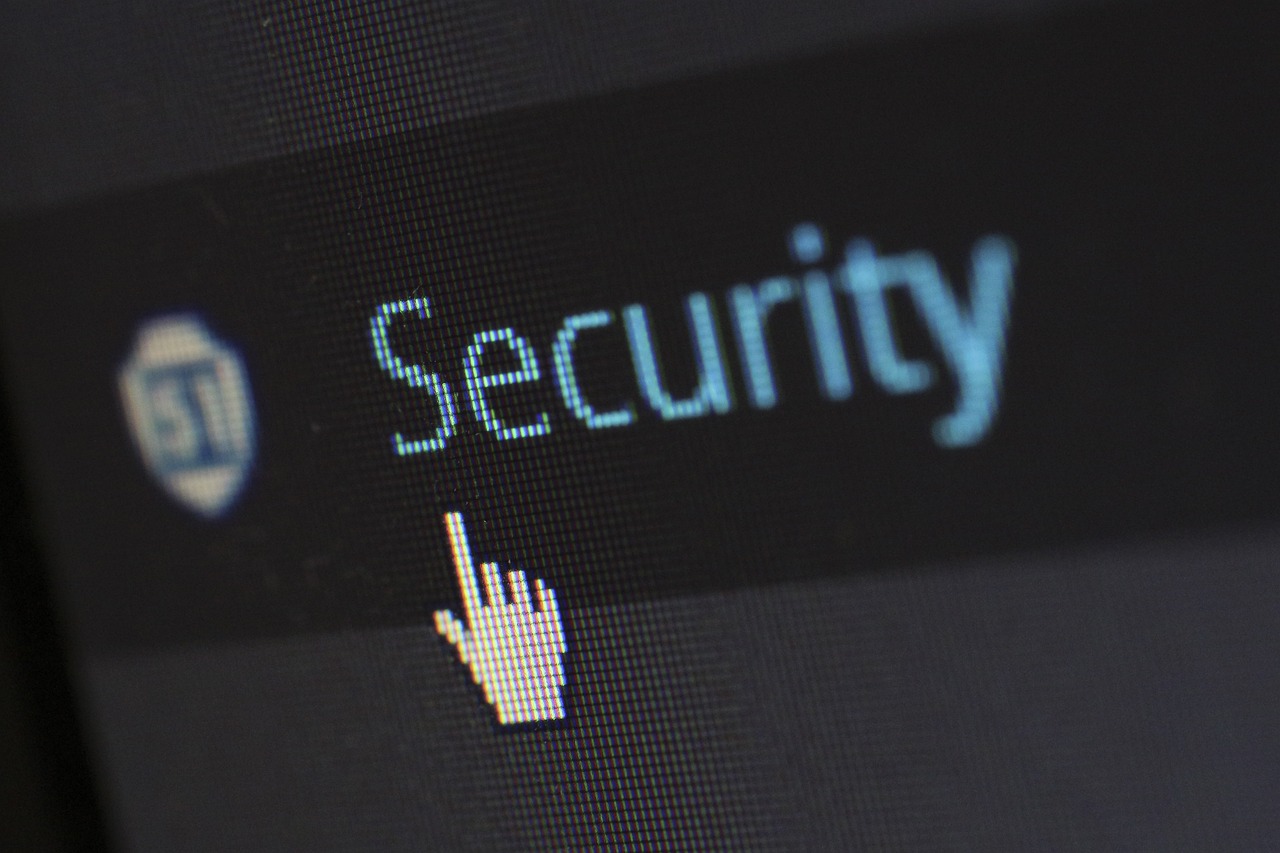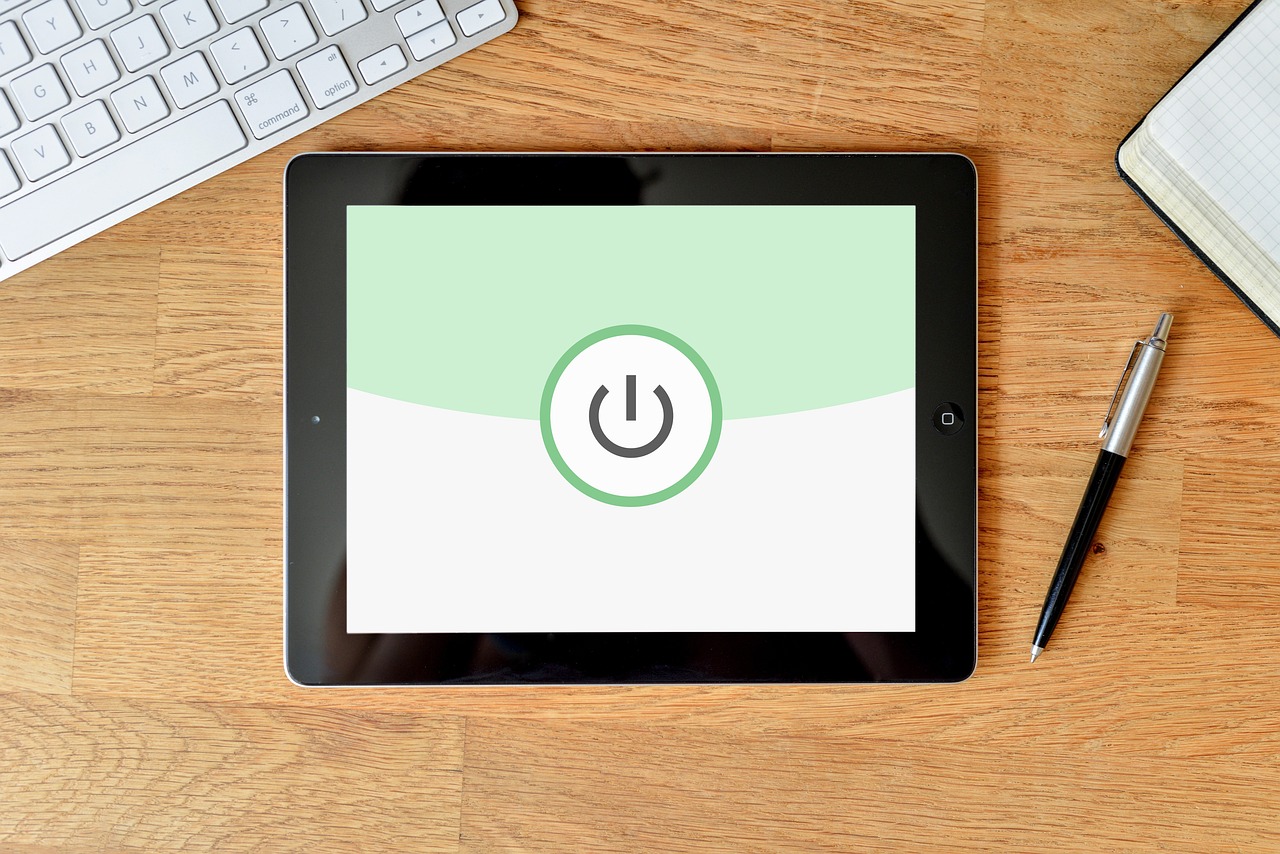Is Two-Factor Authentication Foolproof?
In an age where cyber threats loom large, the question of whether two-factor authentication (2FA) is foolproof is more relevant than ever. 2FA is often marketed as a robust shield against unauthorized access, but is it truly impenetrable? To answer this, we must delve into the mechanics of 2FA, its advantages, limitations, and the evolving landscape of cybersecurity. While 2FA significantly enhances security, it’s essential to recognize that no system is without weaknesses. So, let’s explore the intricacies of 2FA and determine if it can genuinely be deemed foolproof.
Two-factor authentication works by requiring users to provide two different types of information to verify their identity. Typically, this involves something you know (like a password) and something you have (like a smartphone app that generates a code). This dual-layer approach aims to create a formidable barrier against potential attackers. However, the effectiveness of 2FA is not just about its structure; it’s also influenced by user behavior and the methods employed by cybercriminals.
One of the standout features of 2FA is its ability to significantly reduce the risk of unauthorized access. By adding that extra layer of security, even if a password is compromised, the account remains protected as long as the second factor is not also breached. This is akin to having a lock on your front door and an alarm system in place. While a thief might pick the lock, they still have to bypass the alarm to get inside. However, this analogy doesn't account for every scenario. Attackers are constantly evolving their tactics, and some may find ways to circumvent even the most secure systems.
Moreover, the user experience plays a crucial role in the overall effectiveness of 2FA. While many users appreciate the added security, others may find it cumbersome. Imagine being in a rush to access an important document, only to be halted by a 2FA prompt. This can lead to frustration and, in some cases, users opting out of using the feature altogether. Therefore, organizations must strike a balance between security and user convenience to ensure that 2FA is adopted widely and effectively.
Ultimately, while two-factor authentication is a powerful tool in the fight against cyber threats, it is not a silver bullet. It is essential to maintain a balanced perspective on its capabilities. The reality is that attackers continuously adapt, and as they do, so too must our defenses. In the end, the question remains: is 2FA foolproof? The answer is nuanced; it offers substantial protection but is not infallible. As we navigate this digital landscape, it’s crucial to stay informed and proactive in our security measures.
- What is two-factor authentication?
Two-factor authentication is a security process that requires two different forms of identification to access an account, typically a password and a verification code sent to a device.
- How does 2FA improve security?
By requiring two different types of information, 2FA makes it much harder for attackers to gain unauthorized access, even if they have obtained a user's password.
- Are there any drawbacks to using 2FA?
While 2FA enhances security, it can also introduce challenges such as user inconvenience and potential vulnerabilities through social engineering attacks.
- Can 2FA be bypassed?
Yes, attackers can sometimes bypass 2FA through methods like phishing or social engineering, which is why it's important to remain vigilant and use additional security measures.

The Basics of Two-Factor Authentication
Understanding the fundamental principles behind two-factor authentication (2FA) is crucial for anyone looking to enhance their online security. At its core, 2FA is a security process in which the user provides two different authentication factors to verify their identity. This method significantly reduces the likelihood of unauthorized access, even if a hacker has stolen a user’s password. But how does it actually work? Let’s break it down.
Two-factor authentication typically involves a combination of two types of factors:
- Something You Know: This is usually your password or PIN. It’s the first line of defense in securing your account.
- Something You Have: This could be a mobile device, a hardware token, or a smart card that generates a one-time code.
- Something You Are: This refers to biometric data, such as fingerprints or facial recognition, which adds a unique layer of security.
When you log in to a service that uses 2FA, you first enter your username and password. If those credentials are correct, the system will then prompt you for the second factor. This could involve receiving a text message with a code, using an authentication app, or even providing a fingerprint scan. By requiring both a password and a second factor, 2FA makes it significantly more difficult for cybercriminals to gain access to your accounts.
It’s important to note that while 2FA greatly enhances security, it’s not a silver bullet. Cybersecurity is constantly evolving, and so are the tactics used by attackers. However, understanding the basics of 2FA is the first step towards implementing a more robust security posture. By being aware of how 2FA works and the types of factors involved, users can better appreciate its importance in protecting their sensitive information.
In conclusion, two-factor authentication is a powerful tool in the fight against unauthorized access. By combining something you know with something you have or are, it creates a formidable barrier against potential threats. As we continue to navigate the digital landscape, embracing 2FA can be one of the smartest decisions you make for your online security.

Benefits of Implementing 2FA
In today’s digital age, where our lives are intertwined with technology, the importance of securing our online accounts cannot be overstated. This is where two-factor authentication (2FA) comes into play, acting as a formidable guardian against unauthorized access. So, what exactly are the benefits of implementing 2FA? Let's dive in!
First and foremost, the most significant advantage of 2FA is the enhanced security it offers. By requiring not just a password but also an additional verification step, 2FA makes it exponentially harder for cybercriminals to gain access to sensitive information. Think of it like having a vault with two locks instead of one; even if someone has the key to the first lock (your password), they still need the second key (the second factor) to get inside.
Moreover, 2FA significantly reduces the risk of data breaches. According to recent studies, accounts that utilize two-factor authentication are far less likely to be compromised. For instance, a report by Google indicated that 2FA can block up to 99% of automated attacks. This statistic alone should make organizations reconsider their security protocols. Implementing 2FA is like putting a powerful shield around your data, making it less attractive to potential attackers.
Another benefit is the improved user trust. When customers see that a service provider prioritizes their security by implementing 2FA, it fosters a sense of reliability and safety. Users are more likely to engage with platforms that take security seriously. This trust can lead to increased customer loyalty, as people tend to stick with brands that protect their information. Just imagine walking into a bank that has state-of-the-art security measures; you’d feel more at ease knowing your money is safe, right?
Additionally, 2FA can be a critical component of regulatory compliance. Many industries are subject to stringent regulations regarding data protection. By implementing two-factor authentication, organizations can not only enhance their security posture but also demonstrate compliance with laws such as GDPR or HIPAA. This is crucial for avoiding hefty fines and maintaining a good reputation in the market.
Now, let’s consider the various types of 2FA methods available. These can range from something you know (like a password) to something you have (like a smartphone app or a hardware token) and even something you are (like biometric data). Each of these factors plays a role in fortifying security, and organizations can choose the combination that best fits their needs. Here’s a quick overview:
| Authentication Factor | Description |
|---|---|
| Something You Know | Password or PIN |
| Something You Have | Smartphone app, hardware token, or SMS code |
| Something You Are | Biometric data like fingerprints or facial recognition |
In conclusion, the benefits of implementing two-factor authentication are clear. From enhanced security and reduced risks of data breaches to improved user trust and regulatory compliance, 2FA is a powerful tool in today’s cybersecurity arsenal. As we continue to navigate the complexities of the digital world, embracing 2FA is not just a smart move; it’s a necessary one. So, why not take that extra step to protect what matters most?
- What is two-factor authentication?
2FA is a security process that requires two different forms of identification to access an account, typically a password and a second factor like a code sent to your phone. - Is 2FA foolproof?
While 2FA significantly enhances security, it is not entirely foolproof. It can still be bypassed through social engineering or technological vulnerabilities. - How do I set up 2FA?
Most platforms offer 2FA in their security settings. You can usually enable it by linking your account to an authentication app or providing a phone number for SMS codes. - What should I do if I lose access to my second factor?
Most services provide backup codes or alternative recovery methods. It's essential to keep these in a safe place.

Enhanced Security Measures
When it comes to securing our digital lives, two-factor authentication (2FA) is like adding a deadbolt to your front door. Sure, a regular lock is good, but why not add that extra layer of security? 2FA does just that by requiring not only a password but also a second piece of information before granting access to your account. This means that even if someone manages to steal your password, they still need that second factor to break in. It’s like needing both the key and a secret code to unlock a treasure chest.
So, what exactly constitutes this second factor? Well, it can come in various forms, enhancing your security profile in multiple ways. Here are the three primary types:
- Something You Know: This is typically your password, but it can also include answers to security questions.
- Something You Have: This could be a smartphone app that generates a time-sensitive code, a hardware token, or even a text message sent to your phone.
- Something You Are: This refers to biometrics, such as fingerprints or facial recognition, which are increasingly being integrated into modern authentication systems.
By combining these factors, 2FA significantly reduces the likelihood of unauthorized access. For instance, even if an attacker has your password, they would still need your mobile device to receive the verification code. This dual requirement creates a formidable barrier against potential breaches. In fact, studies have shown that accounts protected by 2FA are 99% less likely to be compromised compared to those that rely solely on passwords.
But let’s not stop there. The effectiveness of 2FA can be further enhanced through user education and awareness. Organizations can conduct training sessions to inform users about the importance of 2FA and how to implement it effectively. This not only builds a culture of security but also empowers users to take charge of their own defenses. After all, a well-informed user is often the first line of defense against cyber threats.
Moreover, as technology continues to evolve, so do the methods employed by cybercriminals. Therefore, it's essential to stay updated on the latest security measures. For example, some organizations are now adopting adaptive authentication, which evaluates the context of a login attempt—such as the user’s location, device, and time of access—to determine the required level of authentication. This means that if you’re logging in from a familiar location, you might only need your password, but if you’re traveling or using a new device, additional verification steps could be triggered.
In summary, while 2FA is not a silver bullet, it is a robust security measure that significantly enhances account protection. By understanding how it works and actively participating in its implementation, users can create a more secure digital environment for themselves and their organizations. As we navigate the ever-changing landscape of cybersecurity, embracing tools like 2FA is not just wise; it’s essential.
- What is two-factor authentication?
Two-factor authentication (2FA) is a security process that requires two different forms of identification before granting access to an account. - How does 2FA enhance security?
It adds an extra layer of protection by requiring not only a password but also a second factor, making it harder for unauthorized users to gain access. - Is 2FA foolproof?
No security measure is completely foolproof, but 2FA significantly reduces the risk of unauthorized access. - What are common types of authentication factors?
Common types include something you know (password), something you have (mobile device), and something you are (biometrics). - Can I use 2FA for all my accounts?
Many online services offer 2FA as an option, and it's highly recommended to enable it wherever possible.

Types of Authentication Factors
When it comes to two-factor authentication (2FA), understanding the different types of authentication factors is essential. These factors can be categorized into three primary types: something you know, something you have, and something you are. Each of these plays a crucial role in enhancing security and making it harder for unauthorized users to gain access to sensitive information.
The first factor, something you know, typically refers to passwords or PINs. This is the most common authentication method that many of us are familiar with. However, relying solely on passwords can be risky, as they can be easily compromised through various means such as phishing attacks or brute-force attacks. Therefore, while passwords are essential, they should not be the only line of defense.
Next, we have something you have. This factor often involves physical devices, such as smartphones or hardware tokens, that generate time-sensitive codes or receive push notifications. For instance, when you log into your bank account, you might receive a text message with a code that you need to enter to complete the login process. This adds an extra layer of security because even if someone has your password, they would still need access to your phone or token to gain entry.
Lastly, there’s something you are, which encompasses biometric data like fingerprints, facial recognition, or voice patterns. This factor is becoming increasingly popular as technology advances. Biometric authentication is unique to each individual, making it incredibly difficult for attackers to replicate. For example, many smartphones now allow users to unlock their devices using their fingerprints or facial recognition, providing a seamless and secure way to access accounts.
To summarize, here’s a quick breakdown of the types of authentication factors:
| Type | Description | Examples |
|---|---|---|
| Something You Know | Information that only the user should know | Password, PIN |
| Something You Have | A physical device or token that the user possesses | Smartphone, hardware token |
| Something You Are | Biometric identifiers unique to the user | Fingerprint, facial recognition |
Incorporating multiple factors from these categories into your authentication process can significantly enhance your security posture. By leveraging the strengths of each type, users can create a robust defense against unauthorized access, making it much more challenging for attackers to succeed. Ultimately, the combination of these factors forms a multi-layered approach to security that is essential in today’s digital landscape.
- What is two-factor authentication?
Two-factor authentication is a security process that requires two different forms of identification to access an account, enhancing security beyond just a password.
- Why is 2FA important?
2FA adds an additional layer of security to protect sensitive information from unauthorized access, making it significantly harder for attackers to compromise accounts.
- Can 2FA be bypassed?
While 2FA greatly enhances security, it is not foolproof. Attackers can exploit vulnerabilities through social engineering or technological flaws.
- What are common methods of 2FA?
Common methods include SMS codes, authentication apps, email codes, and biometric verification.

Real-World Examples
When it comes to two-factor authentication (2FA), the proof is often in the pudding—or in this case, the real-world examples that showcase its effectiveness. One notable incident occurred with the popular social media platform Twitter in 2019. A high-profile attack targeted several accounts, including those of celebrities and politicians. However, many of these accounts had 2FA enabled, which significantly hampered the attackers' efforts. This incident highlighted how 2FA can serve as a formidable barrier against unauthorized access, even for accounts that are typically high-value targets.
Another compelling example is the case of a major financial institution that implemented 2FA after a series of data breaches. Following the adoption of this security measure, the bank reported a dramatic decrease in unauthorized access attempts. In fact, they noted a 70% reduction in successful phishing attacks. This not only protected sensitive customer information but also bolstered user trust in the institution. Customers felt more secure knowing that their accounts were protected by an additional layer of security.
Moreover, consider the infamous 2014 iCloud breach, where numerous celebrities had their private photos leaked. While this incident was a wake-up call for many, it also spurred a surge in the adoption of 2FA across various platforms. Following the breach, Apple introduced 2FA for iCloud accounts, which has since been credited with preventing numerous unauthorized access attempts. This shift not only protected individual users but also reinforced the importance of 2FA in safeguarding sensitive information in the digital age.
In addition to these examples, numerous organizations have shared their success stories regarding 2FA implementation. A survey conducted by a cybersecurity firm revealed that over 80% of businesses that adopted 2FA reported enhanced security and reduced incidents of data breaches. The survey also indicated that companies that prioritize 2FA are viewed more favorably by customers, leading to increased loyalty and trust.
In conclusion, real-world examples demonstrate that while no security measure is entirely foolproof, two-factor authentication significantly enhances account protection. From thwarting high-profile attacks to reducing phishing incidents, 2FA has proven its worth time and again. By examining these cases, we can better appreciate the critical role of 2FA in the continuous battle against cyber threats.
- What is two-factor authentication?
Two-factor authentication (2FA) is a security process that requires two different forms of identification to access an account, typically something you know (like a password) and something you have (like a smartphone app or hardware token). - Is 2FA completely secure?
While 2FA significantly enhances security, it is not entirely foolproof. Attackers can still exploit vulnerabilities, such as social engineering tactics or technological flaws. - How can I enable 2FA on my accounts?
Most major online services provide options to enable 2FA in their security settings. Look for options like "Two-Step Verification" or "Two-Factor Authentication" in your account settings. - What are the different types of 2FA?
Common types of 2FA include SMS codes, authenticator apps, hardware tokens, and biometric verification (like fingerprints or facial recognition).

User Experience and Adoption Challenges
Implementing two-factor authentication (2FA) can feel like a double-edged sword. On one hand, it significantly enhances security; on the other, it can create hurdles that frustrate users. Imagine you’re trying to log into your favorite online service, and suddenly, you're greeted with an extra step that requires a code sent to your phone. While this is a great security measure, it can also feel like a minor inconvenience. User experience is crucial in the digital world, and when security measures complicate access, users might be tempted to bypass them altogether.
One of the most significant challenges with 2FA is the potential for user frustration. Many users may not be tech-savvy, and the added complexity can lead to confusion. For instance, if someone changes their phone number or loses their device, they might find themselves locked out of their accounts, leading to an experience that feels more punishing than protective. To mitigate these challenges, organizations must prioritize user education. Providing clear instructions and support can help users feel more comfortable with the extra step.
Moreover, the perception of inconvenience can lead to lower adoption rates. Users may view 2FA as just another hurdle in their daily digital interactions. To combat this, companies should consider implementing user-friendly solutions, such as:
- Push Notifications: Instead of requiring users to enter a code manually, push notifications can streamline the process, allowing users to approve access with a single tap.
- Backup Codes: Providing backup codes can give users peace of mind, knowing they have a way to access their accounts if they lose their primary authentication method.
- Educative Campaigns: Running campaigns that highlight the importance of 2FA can boost user understanding and acceptance.
Another challenge lies in the perception of security. Some users may question whether 2FA truly enhances their safety or if it’s just a marketing gimmick. This skepticism can be addressed through transparent communication about the risks associated with not using 2FA. When users understand the potential threats, they’re more likely to appreciate the added security.
In conclusion, while two-factor authentication is a powerful tool for enhancing security, it’s essential to strike a balance between protection and user experience. By simplifying the process and educating users, organizations can foster a culture of security that empowers users rather than alienates them. After all, the goal is to create a secure environment without sacrificing usability.
1. What is two-factor authentication?
Two-factor authentication (2FA) is a security process that requires two different forms of identification to access an account, adding an extra layer of protection beyond just a password.
2. How does 2FA improve security?
By requiring a second form of verification, such as a code sent to your phone, 2FA makes it significantly harder for unauthorized users to gain access to your accounts, even if they have your password.
3. What are common methods of 2FA?
Common methods include SMS codes, authentication apps, and biometric verification such as fingerprint or facial recognition.
4. Can I disable 2FA once it's set up?
While you can often disable 2FA, it is not recommended as it reduces the security of your account. It's best to keep it enabled for added protection.
5. What should I do if I lose my 2FA device?
If you lose your 2FA device, you should use any backup codes provided during setup or contact the service provider for recovery options.

Limitations of Two-Factor Authentication
While two-factor authentication (2FA) has become a staple in the realm of cybersecurity, it’s essential to recognize that it isn’t a silver bullet. Just like a lock on your front door, it adds a layer of security, but it’s not impervious to skilled intruders. One of the most significant limitations of 2FA is that it can provide a false sense of security. Users may think that simply enabling 2FA is enough to safeguard their accounts, leading to complacency in other areas of their digital security practices.
Another critical limitation is the potential for social engineering attacks. Cybercriminals are adept at manipulating individuals into divulging sensitive information. For instance, they might impersonate a trusted entity to persuade a user to provide their second factor of authentication, such as a code sent via SMS or email. This tactic can effectively bypass the very protections that 2FA is supposed to offer. The human element in security is often the weakest link, and no amount of technology can completely eliminate this vulnerability.
Additionally, there are technological vulnerabilities that can undermine the effectiveness of 2FA. For example, if the system generating the authentication codes is compromised, or if users are still relying on outdated software, the security provided by 2FA can be significantly weakened. Cyber threats are constantly evolving, and so must our approaches to security. Failing to keep up with updates and best practices can leave systems exposed, regardless of whether 2FA is implemented.
Moreover, not all forms of 2FA are created equal. Some methods, like SMS-based codes, are more susceptible to interception through techniques like SIM swapping or phishing. In contrast, hardware tokens or authenticator apps offer a more secure alternative, yet they require users to adopt additional technology, which can pose its own challenges. The variety in methods can lead to confusion among users, further complicating the adoption of 2FA.
In summary, while 2FA significantly enhances security, it is not foolproof. Organizations and individuals must remain vigilant and adopt a multi-layered approach to security that includes not only 2FA but also strong password policies, user education, and regular system updates. The battle against cyber threats is ongoing, and staying informed about the limitations of any security measure is crucial for maintaining robust defenses.
- Is two-factor authentication completely secure? No, while 2FA adds a layer of security, it is not immune to attacks, especially those that exploit human vulnerabilities.
- What are the most common methods of two-factor authentication? Common methods include SMS codes, email codes, authenticator apps, and hardware tokens.
- How can I improve my security beyond two-factor authentication? Consider using strong, unique passwords, regularly updating your software, and being aware of social engineering tactics.

Social Engineering Attacks
When we talk about two-factor authentication (2FA), we often think of it as a robust shield against unauthorized access. However, lurking in the shadows are , which can render even the most secure systems vulnerable. Imagine this: you’ve set up 2FA on your accounts, feeling like a cybersecurity ninja, but then you receive a seemingly innocent phone call or email. The attacker, posing as a trusted entity, uses their charm and cunning to manipulate you into revealing your authentication codes. This is the essence of social engineering—exploiting human psychology rather than technical vulnerabilities.
Social engineering attacks can take various forms, and they often rely on a few common tactics:
- Phishing: Attackers send emails that look legitimate, tricking users into clicking on malicious links or entering their credentials on fake websites.
- Pretexting: The attacker creates a fabricated scenario to obtain sensitive information. For instance, they might impersonate a bank representative to lure you into sharing your 2FA codes.
- Baiting: This involves enticing users with promises of free gifts or downloads, leading them to expose their credentials.
These tactics highlight a crucial point: while 2FA adds an extra layer of security, it is not foolproof if users are not vigilant. The human factor remains the weakest link in the security chain. For example, consider a case where an employee at a financial institution received a phone call from someone claiming to be from the IT department. The caller, using a convincing tone, requested the employee's 2FA code to resolve a supposed security issue. The employee, trusting the caller, complied, compromising their account without realizing it.
Additionally, the rise of smishing (SMS phishing) and vishing (voice phishing) has made social engineering even more prevalent. Attackers are now using text messages and voice calls to reach victims directly, making their schemes more effective. The reality is that no matter how sophisticated your 2FA system is, if you inadvertently hand over your authentication codes, you might as well have left the front door wide open.
To combat these social engineering threats, it’s essential to foster a culture of awareness and skepticism. Here are some strategies that can help:
- Education: Regular training sessions on recognizing phishing attempts and social engineering tactics can empower users to protect themselves.
- Verification: Encourage users to verify unexpected requests for sensitive information through a separate communication channel.
- Reporting: Establish a clear process for reporting suspicious activities or communications, ensuring that users feel supported in their efforts to maintain security.
In conclusion, while two-factor authentication significantly enhances security, it’s vital to remember that it is not an impenetrable fortress. Social engineering attacks exploit our human instincts and trust, making it crucial for individuals and organizations to remain vigilant. By combining strong authentication methods with a healthy dose of skepticism and education, we can better protect ourselves against these cunning tactics.

Technological Vulnerabilities
When we talk about two-factor authentication (2FA), we often focus on its benefits, but we can't ignore the fact that no system is infallible. In the world of cybersecurity, can serve as chinks in the armor of even the most robust security measures. While 2FA adds an essential layer of protection, it can be compromised by various technological issues that organizations and users must remain vigilant against.
For starters, consider the role of outdated software. Many systems rely on legacy software that may not support the latest security protocols. This can create a gap in the protective measures that 2FA is supposed to provide. If a user is attempting to access their account through an outdated application, the security features may not function as intended, leaving them exposed to potential threats. Imagine driving a car with old brakes; no matter how advanced the engine is, you're still at risk if the brakes fail.
Moreover, vulnerabilities in the authentication process can arise from poor implementation. For example, if a company does not properly configure its 2FA settings, it may unintentionally create loopholes that attackers can exploit. This could include situations where the second factor is not mandatory for all users or where backup codes are not securely stored. Such oversights can lead to scenarios where attackers bypass the additional security measures entirely.
Another significant concern is the reliance on SMS-based authentication. While it's one of the most common forms of 2FA, it is not without its flaws. SMS messages can be intercepted through various methods, such as SIM swapping or man-in-the-middle attacks. This means that an attacker could potentially gain access to the second factor, rendering the 2FA process ineffective. To illustrate this point, consider a situation where an attacker tricks the mobile carrier into transferring a victim's phone number to their own device. Suddenly, the attacker receives the authentication codes intended for the victim, effectively bypassing 2FA.
Lastly, the rise of sophisticated phishing attacks poses a significant threat to 2FA systems. Attackers are becoming increasingly adept at creating convincing fake websites and emails that can trick users into revealing their authentication details. In these scenarios, even the most security-conscious users can fall prey to social engineering tactics, making it crucial for organizations to educate their users on recognizing potential threats.
In summary, while two-factor authentication is a vital tool in the fight against unauthorized access, it is not a silver bullet. Organizations and users must remain aware of the that can undermine its effectiveness. Continuous education, regular software updates, and the implementation of more secure forms of authentication—such as biometric factors—can help mitigate these risks and enhance overall security.
- What are the main benefits of using two-factor authentication?
Two-factor authentication significantly enhances security by requiring a second form of verification, reducing the risk of unauthorized access. - Can two-factor authentication be bypassed?
Yes, despite its effectiveness, 2FA can be bypassed through social engineering, technological vulnerabilities, or poor implementation. - What is the most secure form of two-factor authentication?
Biometric factors, such as fingerprint or facial recognition, are considered more secure than SMS or email-based methods. - How can organizations encourage user adoption of 2FA?
Organizations can provide user-friendly options, clear instructions, and highlight the importance of security to encourage adoption.

The Future of Two-Factor Authentication
The landscape of cybersecurity is constantly shifting, and two-factor authentication (2FA) is no exception. As cyber threats become more sophisticated, the methods we use to secure our online identities must evolve as well. The future of 2FA is not just about adding another layer of security; it's about adapting to new challenges and leveraging innovative technologies to enhance user protection. So, what does the future hold for 2FA?
One of the most exciting developments on the horizon is the integration of biometric authentication. This method utilizes unique physical traits—like fingerprints, facial recognition, or even voice patterns—to verify identity. Imagine logging into your bank account with just a glance at your phone! This not only adds an extra layer of security but also offers a seamless user experience. However, while biometric data is harder to replicate than traditional passwords, it does raise concerns regarding privacy and data storage.
Another trend gaining traction is the use of adaptive authentication. This approach evaluates a variety of factors, such as user behavior, location, and device, to determine the level of risk associated with a login attempt. For instance, if you typically log in from your home computer but suddenly try to access your account from a foreign country, the system might trigger a secondary verification step. This dynamic method allows for a more tailored security experience, enhancing protection without burdening the user unnecessarily.
Moreover, the rise of passwordless authentication is set to revolutionize how we think about security. By eliminating passwords altogether, we can significantly reduce the risk of phishing attacks and credential stuffing. Technologies such as WebAuthn and FIDO2 are paving the way for this future, allowing users to authenticate using secure tokens or biometrics instead of traditional passwords. This shift not only simplifies the login process but also strengthens security by removing a common vulnerability.
As we look ahead, the importance of user education cannot be overstated. Even the most advanced 2FA systems can be compromised if users are not aware of potential threats. Organizations will need to invest in training and resources to help users understand the importance of security measures and how to recognize suspicious activity. This will be crucial in fostering a culture of cybersecurity awareness.
Finally, the future of 2FA will likely see increased collaboration among tech companies, cybersecurity experts, and regulatory bodies. By working together, these stakeholders can establish best practices and standards that enhance the overall security landscape. This collaborative approach can drive innovation and ensure that security measures keep pace with evolving threats.
In summary, while two-factor authentication has proven to be a robust security measure, its future lies in embracing new technologies and methodologies. As we continue to navigate the complexities of digital security, staying informed and adaptable will be key. The next generation of 2FA promises not only to enhance protection against unauthorized access but also to provide a smoother, more user-friendly experience.
- What is two-factor authentication?
Two-factor authentication is a security process that requires two different forms of identification to access an account, typically a password and a secondary verification method. - Why is two-factor authentication important?
It significantly increases security by adding an extra layer of protection, making it much harder for unauthorized users to gain access to accounts. - What are some common types of two-factor authentication?
Common types include SMS codes, authentication apps, and biometric methods like fingerprints or facial recognition. - Can two-factor authentication be bypassed?
While it greatly enhances security, vulnerabilities such as social engineering attacks can potentially compromise 2FA systems. - What does the future hold for two-factor authentication?
The future may include advancements in biometric authentication, adaptive security measures, and a shift towards passwordless systems.
Frequently Asked Questions
- What is Two-Factor Authentication (2FA)?
Two-Factor Authentication (2FA) is a security process that requires two different forms of identification to access an account. It adds an extra layer of protection beyond just a password, typically involving something you know (like a password) and something you have (like a smartphone or hardware token).
- How does 2FA enhance security?
2FA enhances security by requiring two different authentication factors, making it significantly harder for unauthorized users to gain access. Even if an attacker manages to steal your password, they would still need the second factor, such as a code sent to your phone, to successfully log in.
- What are the common types of authentication factors?
The common types of authentication factors include:
- Something you know: This could be a password or a PIN.
- Something you have: This might be a smartphone app that generates codes or a physical hardware token.
- Something you are: This refers to biometric data like fingerprints or facial recognition.
- Are there any limitations to 2FA?
Yes, while 2FA significantly improves security, it is not foolproof. Limitations include susceptibility to social engineering attacks, where attackers trick users into revealing their second factor, and potential technological vulnerabilities in the systems used for authentication.
- Can 2FA prevent all cyberattacks?
No security measure can guarantee complete protection against all cyberattacks. While 2FA greatly reduces the risk of unauthorized access, attackers continuously evolve their tactics, which means users should remain vigilant and implement additional security measures.
- What should I do if I lose access to my 2FA method?
If you lose access to your 2FA method, such as your phone or hardware token, you should immediately contact the service provider for recovery options. Many services offer backup codes or alternative verification methods to help regain access to your account.
- Is 2FA worth the hassle?
Absolutely! The extra step may seem inconvenient, but the protection it offers against unauthorized access is invaluable, especially for sensitive accounts like email, banking, or social media. Think of it as locking your front door and then adding a deadbolt; it just makes your home (or account) that much safer!



















